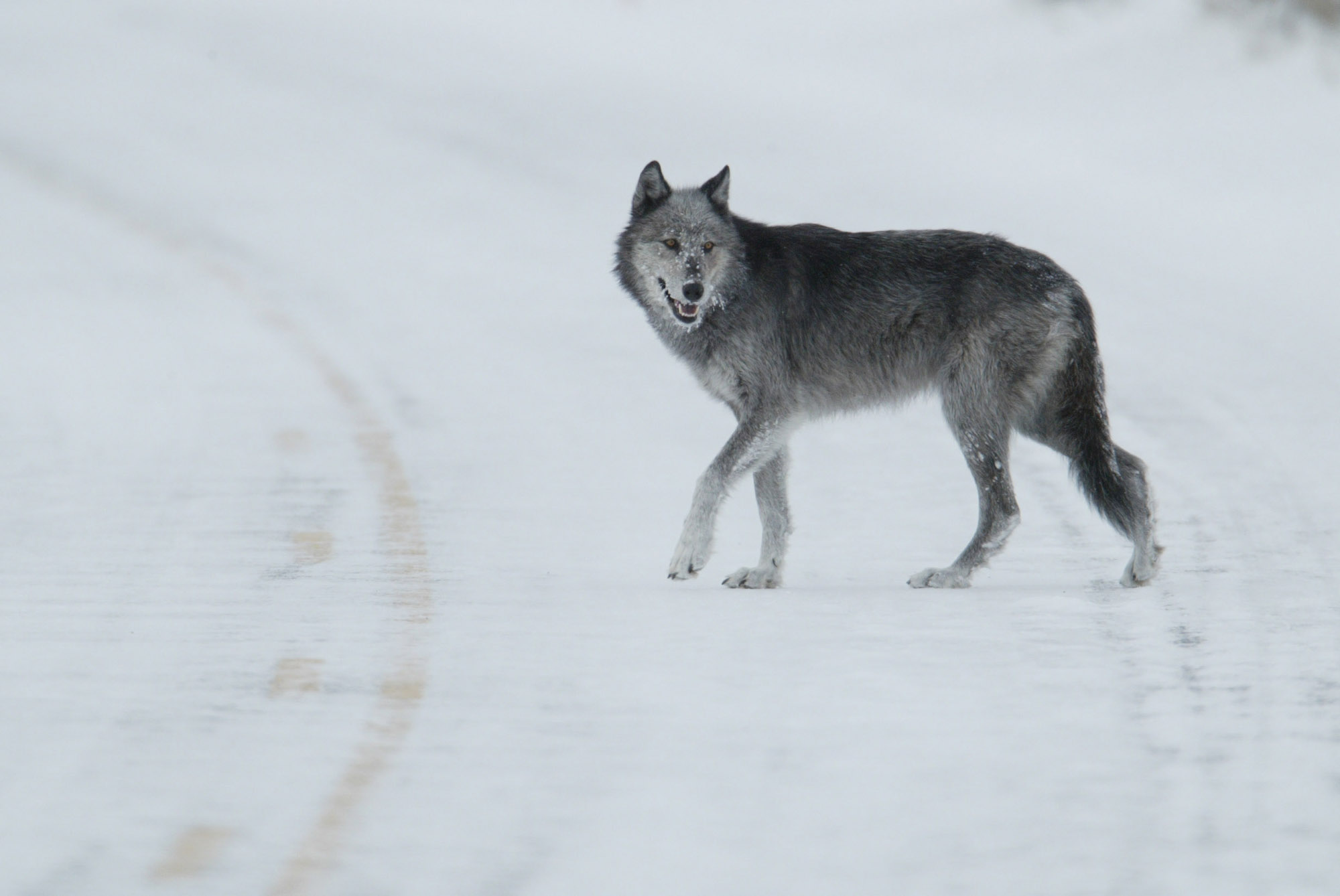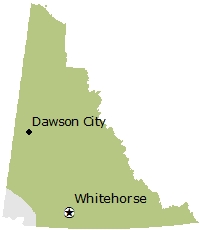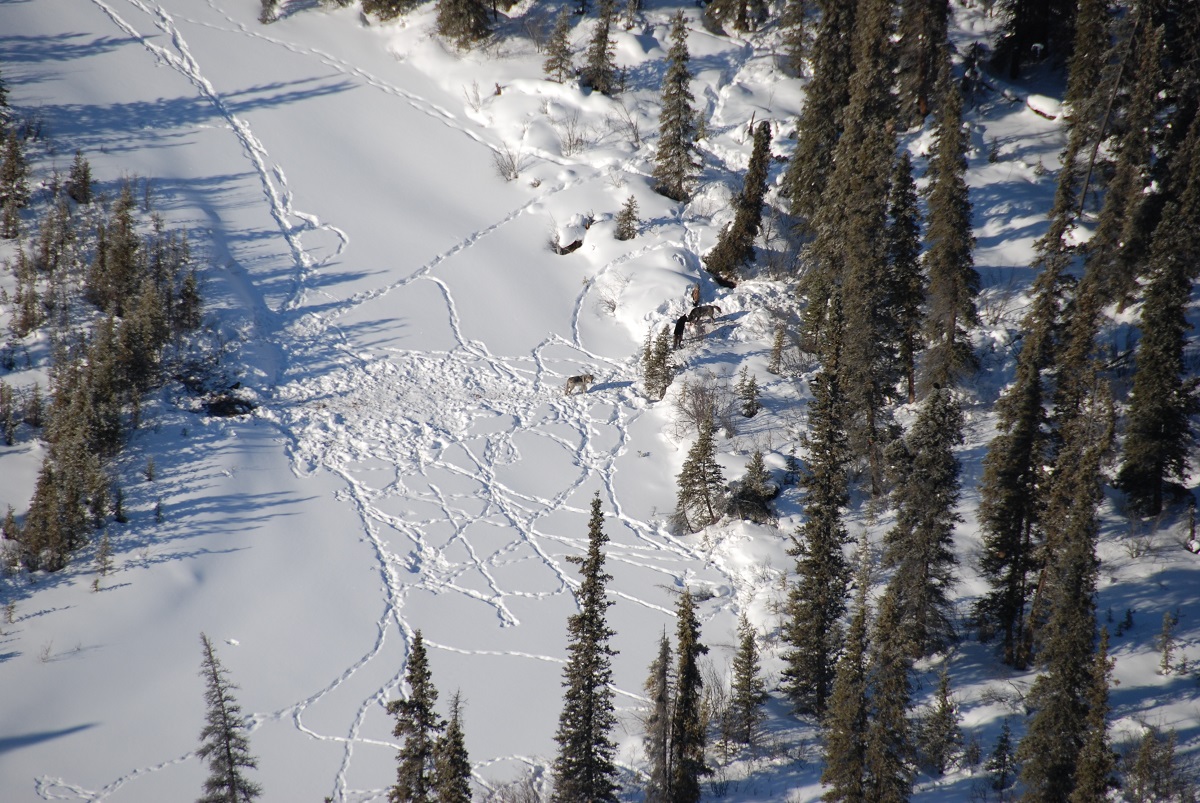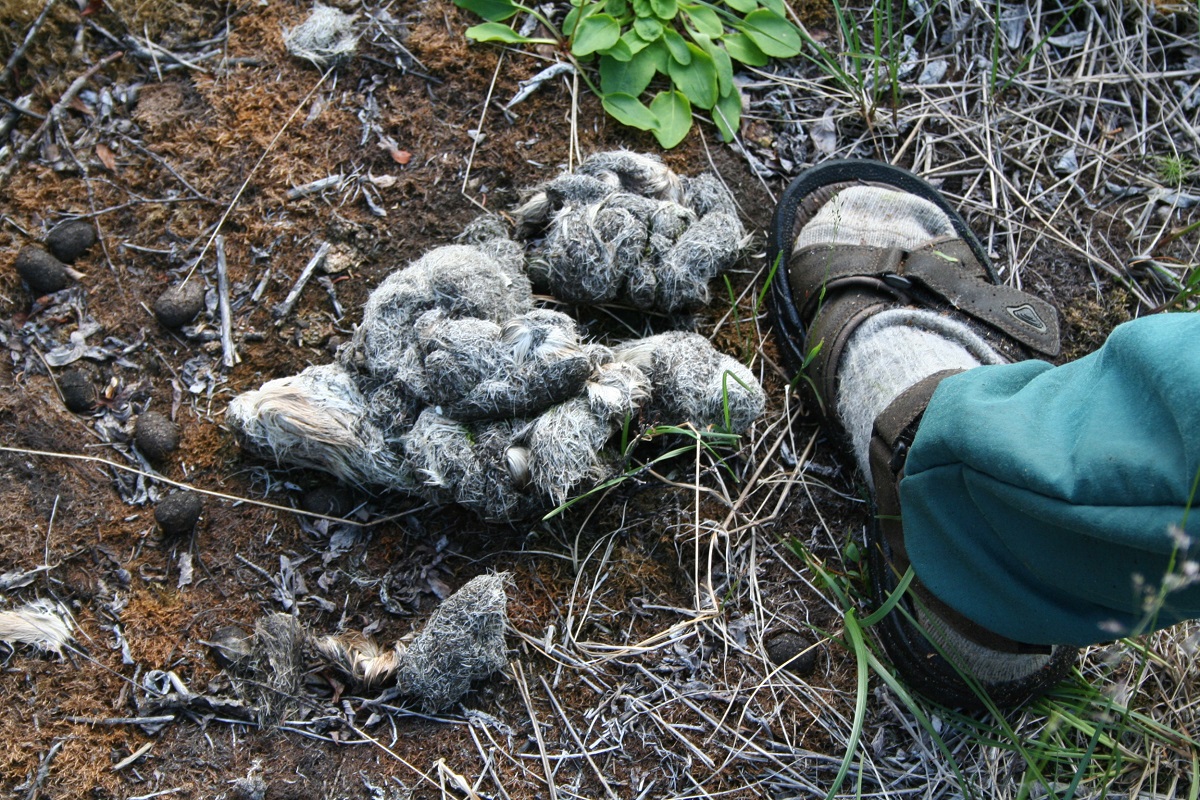
Name
- Common name: Grey Wolf
- Scientific name: Canis lupus
- Order: Carnivora
- Family: Canidae
Also known as
Wolf, Timber Wolf, Tundra Wolf, Amaruq
Viewing opportunities
- Wolves are elusive and viewing them from roadways is not very common. You will have better luck if you go to remote rivers and lakes.
- In the northern Yukon, the Arctic tundra allows for clear long distance views. If you can catch the Barren-ground Caribou migration you may see wolves trailing behind the herd.
- Wolves are easier to hear than see. Their haunting chorus of howls carries a long distance. The best time to hear howling is in the evening when the wind dies down and wolves are most active.
- In winter, following wolf tracks may provide interesting observations about their lives. Wolves are highly social and territorial; leaving scrapes and scent marks along their travel routes to mark their territory.
Description
- Look similar to a domestic dog such as German Shepherd or Husky, but with a bigger head. The wolf is also longer and taller than a dog, with narrower chest and larger feet.
- Wolves can be distinguished from Coyotes by their larger size and different facial characteristics. Coyotes have a narrow snout and large ears relative to its head size, whereas wolves have a broad snout and smaller ears relative to its head size.
Fast facts
- Height: 85 cm
- Weight: 30 to 50 kg
- Lifespan: 4 to 10 years, though they can live up to 15 years
- Predators: Humans
- Habitat: Boreal Forest, Mountain Alpine, Arctic Tundra, Riparian
Conservation status
- Yukon: S4 (Apparently Secure)
- Global: G5 (Secure)
Yukon population estimate
4,500 to 5,000.
Behaviour
Wolves have strong social behaviour. Though some wolves are solitary, they generally form packs. The basic social unit of a wolf pack is the mated pair, accompanied by the pair's adult offspring. The mated pair form the alphas and are dominant in the social order. Typically only the alpha pair breeds in the pack. The average pack size in the Yukon is 7 to 9 wolves, though smaller and larger pack sizes are not uncommon. Formation of a pack is very important for co-operative hunting and raising pups. Wolves are highly territorial and the pack defends its territory from other wolves. The territory size ranges from tens of, to several thousand, square kilometres, and largely depends on prey density.
Diet
Moose, caribou, sheep, and other ungulates.
Distribution

Sights and sounds
env-grey-wolf-audio.mp3



Grey Wolves and people
- The wolf is a major crest of many Yukon First Nation bands. In the southern Yukon, most First Nations Peoples belong to one of two clans: the Crow Clan and the Wolf Clan.
- Wolves are often feared as dangerous predators, though very few attacks on humans have ever been documented. They are very wary of humans and will usually maintain a large distance.
- Prior to the 1970s global wolf populations suffered massive human-caused declines. Programs have now been put in place in many jurisdictions to foster recolonization and reintroduction in parts of its former range.
Management plan
Monitoring programs
Reports
- Coast Mountain Wolf Survey 2022 (2024)
- Southern Lakes Wolf Program - Diet composition and kill rates summary (2023)
- Southern Lakes Wolf Program - Diet composition and kill rates (2023)
- Ecology and Management of Wolves in the Porcupine Caribou Range, Canada 1987 to 1993 (2016)
- Wolf Survey in the Nisutlin River Basin (2011)
- Can non-lethal methods effectively reduce wolf numbers? (2011)
- Does Training Trappers Improve Wolf Trapping Success? (2011)
- Wolf Survey in the Coast Mountains, 2009 (2009)